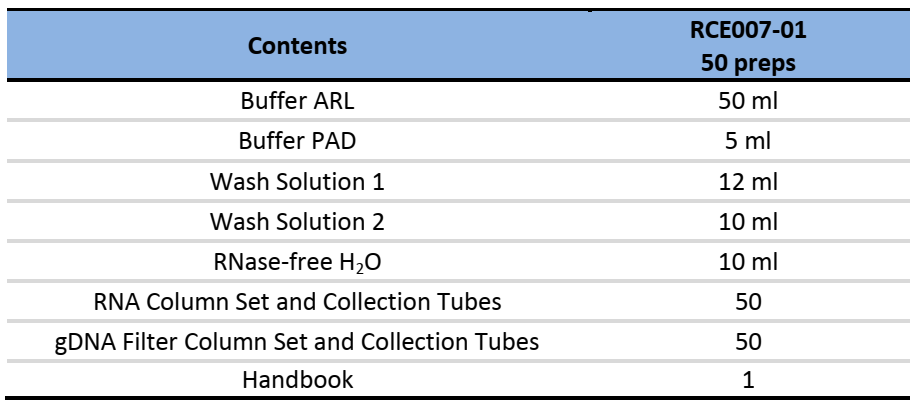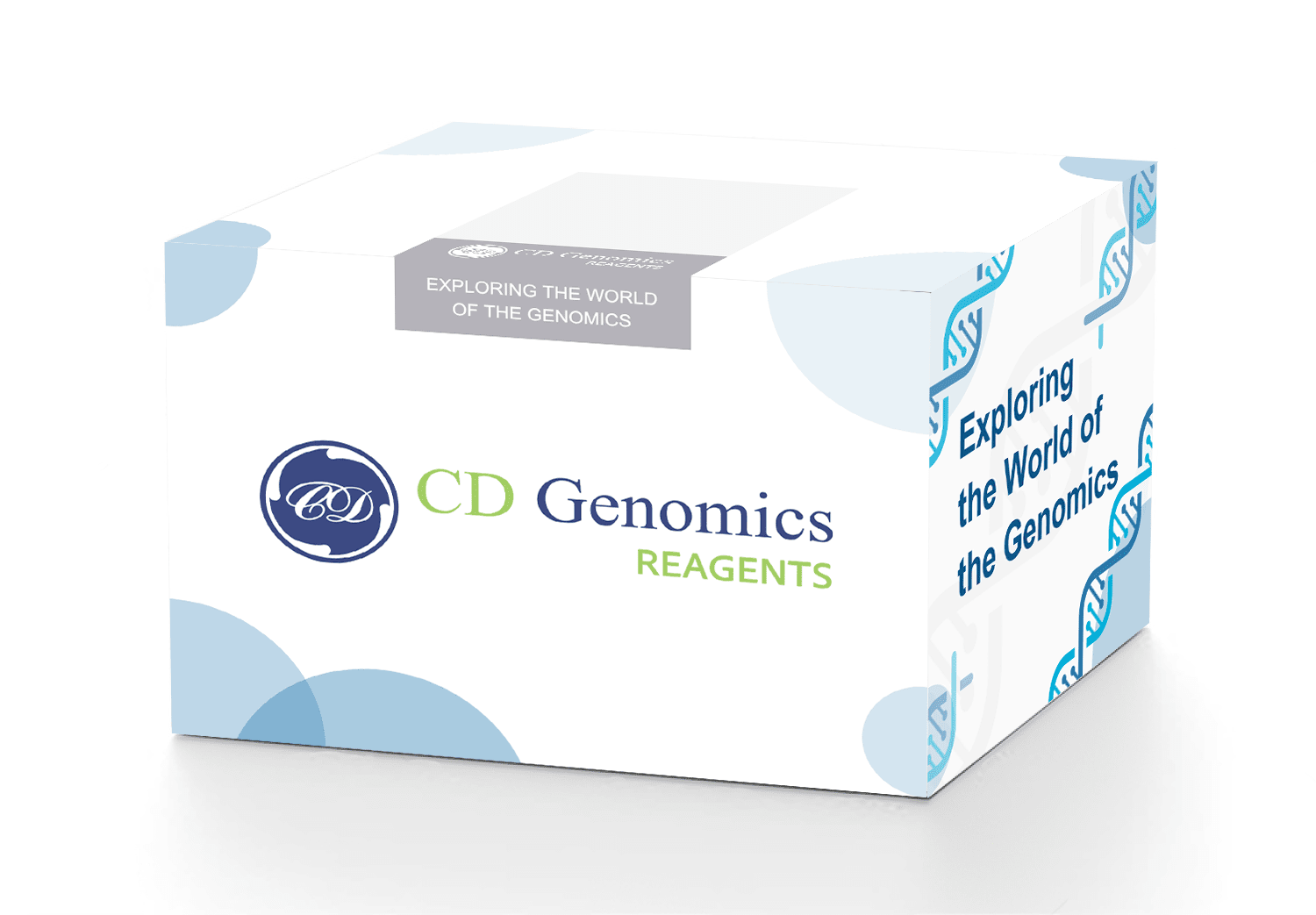The Plant microRNA Isolation Kit is a fast, easy, and cost-effective method for isolating total RNA and microRNA (20-200 nt, such as miRNA, siRNA, and snRNA) from plant tissues, particularly polysaccharide-rich, polyphenol-rich plant tissues. After removing the gDNA, the flow-through is mixed with a higher concentration of ethanol to enhance RNA (including microRNA) binding affinity to the RNA Column membranes. The bound RNA molecules are then eluted, making them ready for molecular biological experiments like RT-PCR, Real-time RT-PCR, Northern Blot, total RNA sequencing, and microRNA analysis, among others. The Kit can be stored for up to 12 months at room temperature (15-25°C), and the sample required is roughly 100mg.
Storage:
The Kit can be stored at room temperature (15-25°C) for up to 12 months.
Components:

Specifications:
| Sample amount | 100mg |
| Features | Efficiency: efficient enrichment of total RNA and microRNA(< 200 nucleotides). Simplity and convenience: the procedure is quick and convenient. High Performance: high-purity RNA suitable for molecular biological experiments. |
| Application | The purified RNA can be used directly for molecular biological experiments such as RT-PCR, Real-time RT-PCR, Northern Blot, total RNA sequencing, and microRNA analysis, etc. |
| Sample type | Plant tissues, especially from polysaccharide-rich, polyphenol-rich plant tissues. |
- Excise 100mg plant tissue in mortar, add 1ml Buffer ARL and 100μl Buffer PAD. Grind tissue in room temperature immediately to inhibit RNase activity.
- Transfer the lysate into 1.5 ml collection tube (not supplied), vortex 15 s vigorously. Centrifuge for 5-10 min at 13,000 rpm.
- Transfer 450μl supernatant to gDNA Filter Column Set in a collection tube (supplied), centrifuge for 60 s at 13,000 rpm. Discard the gDNA Filter Column Set and keep the flow-through.
- Add 1.25 volumes (about 560μl) of ethanol (96%-100%, ensure the ethanol is at room temperature) and mix thoroughly by pipetting up and down several times. Do not centrifuge. Continue the next step without delay.
- Pipet up to 700 µl of the sample every time, including any precipitate that may have formed, into an RNA Column Set in a collection tube (supplied). Close the lid gently and centrifuge at 13,000 rpm f or 30 s at room temperature. Discard the flow-through.
- Add 700 µl Wash Solution 1 (Ensure that ethanol (96% -100%) has been added ) to the RNA Column Set. Close the lid gently and centrifuge for 30 s at 13,000 rpm to wash the column. Discard the flow-through.
- Add 500 µl Wash Solution 2 (Ensure that ethanol (96% -100%) has been added ) to the RNA Column Set. Close the lid gently and centrifuge for 30 s at 13,000 rpm to wash the column. Discard the flow-through.
- Repeat step 7.
- Centrifuge for 2 min at 13,000 rpm to dry the spin column membrane.
- Transfer the RNA Column Set to a new 1.5 ml collection tube (not supplied), and discard the old collection tube with the flow-through. Pipet 30-50 µl RNase-free H2O directly onto the RNA Column membrane. Close the lid gently. Place the tube on the benchtop at room temperature for 1 min, then centrifuge for 1 min at 13,000 rpm to elute the RNA.
- If the expected RNA yield is >30 µg, repeat step 10 with a second volume of 30-50 µl RNase-free H2O. Elute into the same collection tube.
Note: Buffer PAD is indispensable ingredient to remove polysaccharide and polyphenol.
Note: A precipitate may form after addition of ethanol, but this will not affect the procedure.
Note: Reuse the collection tube in step 6.
Note: Reuse the collection tube in step 7.
Note: Reuse the collection tube in step 8.
Note: The long centrifugation dries the spin column membrane, ensuring that no ethanol is carried over during RNA elution. Residual ethanol may interfere with downstream reactions.
Note: To obtain a higher total RNA concentration, this second elution step may be performed by using the first eluate (from step 10). The yield will be 15-30% less than the yield obtained using a second volume of RNase-free H2O, but the final concentration will be higher.


